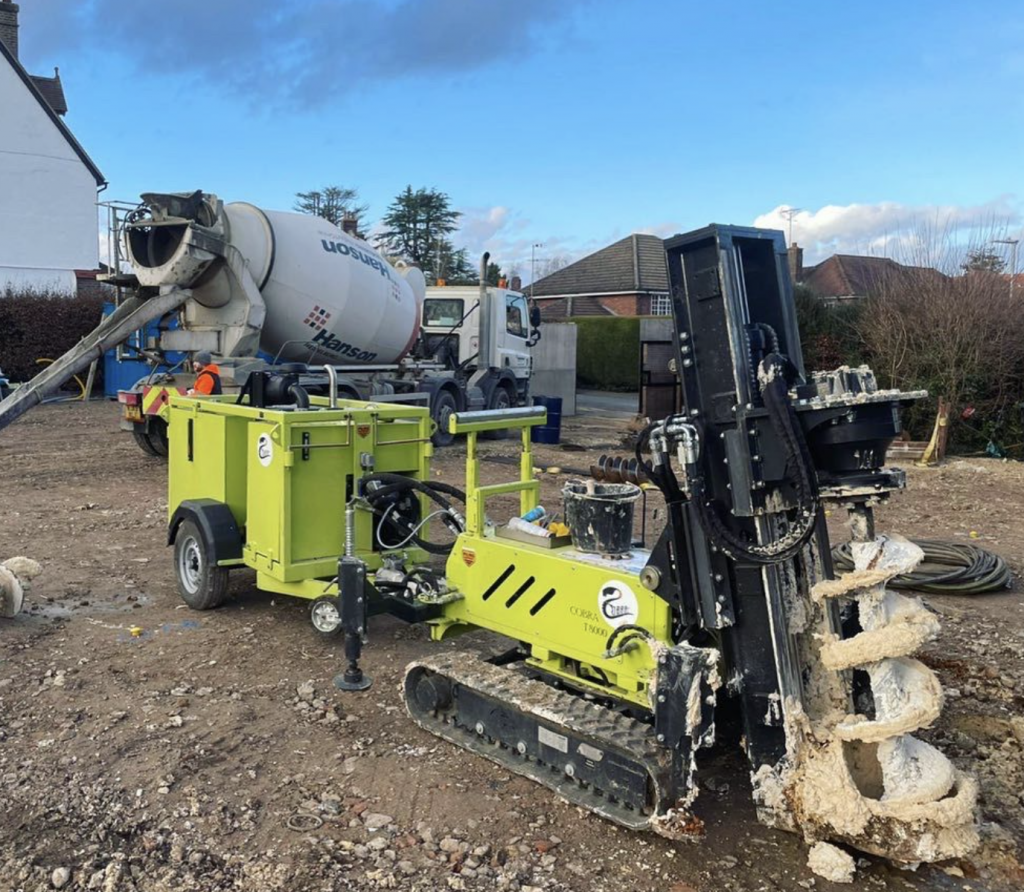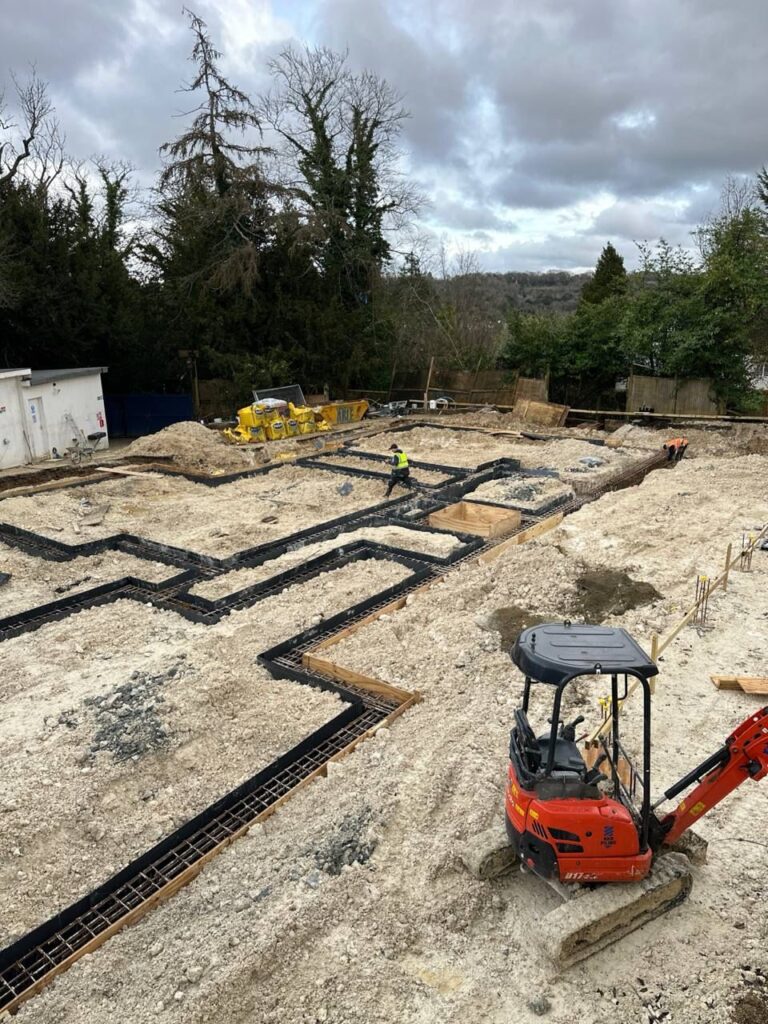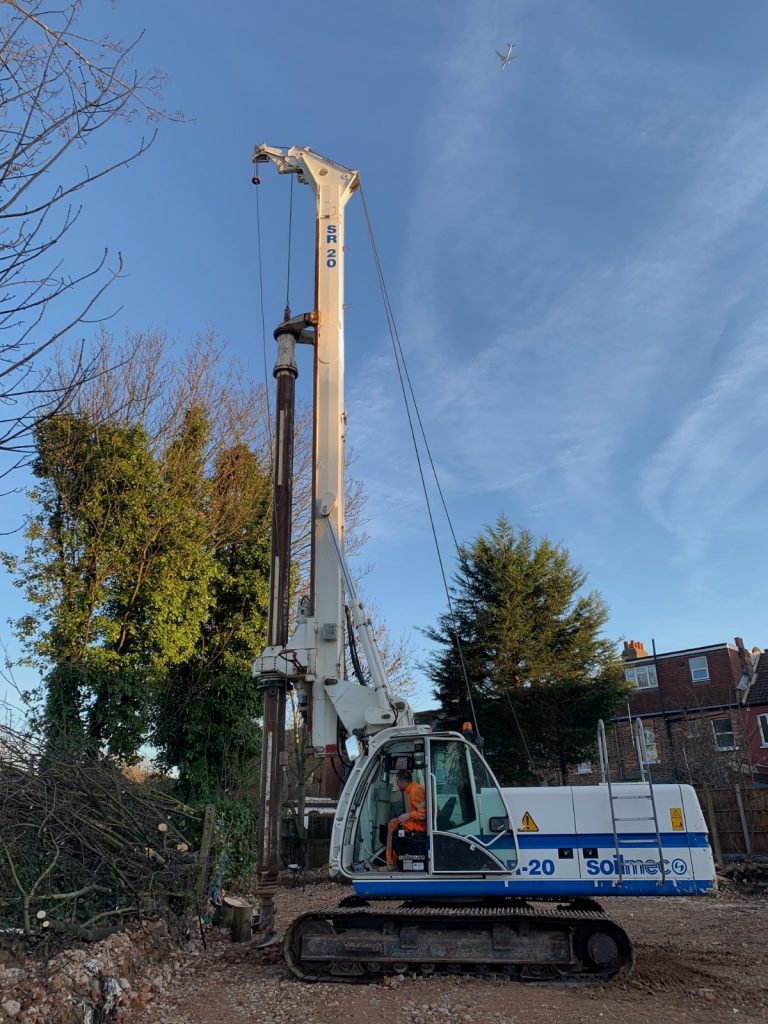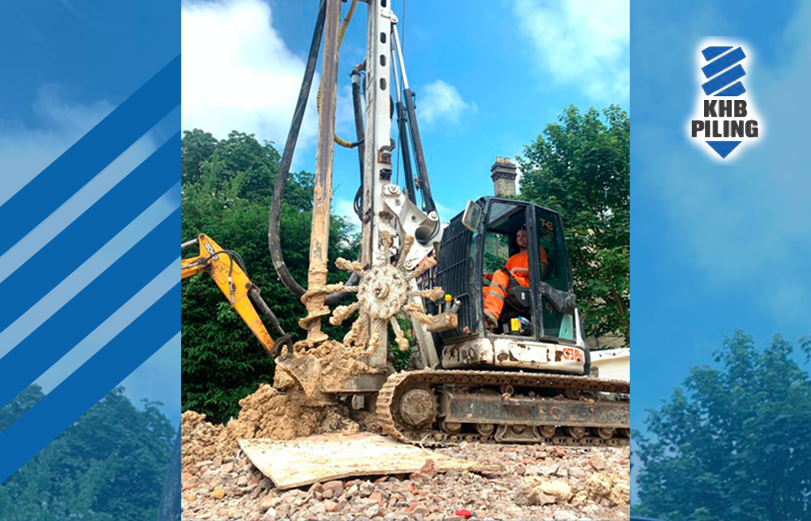In the dynamic and challenging landscape of London’s construction industry, ensuring the structural stability of buildings and infrastructure is crucial. One of the most effective methods for reinforcing foundations and retaining walls is ground anchoring. This technique is widely used in civil engineering and construction to secure structures, prevent soil movement, and provide additional load-bearing support. At KHB Piling LTD, we specialise in expert ground anchoring solutions, tailored to the unique requirements of each project across London.
What is Ground Anchoring?
Ground anchoring involves inserting a high-strength steel tendon or bar into the ground to provide lateral or vertical support to a structure. The anchor is secured into place using grout, and the tension in the anchor creates a stabilising force that resists movement, pressure, or loading from surrounding soil or water.
Ground anchors are commonly used to:
•Secure retaining walls.
•Reinforce slopes and embankments.
•Stabilise deep excavations.
•Prevent soil movement and landslides.
•Provide additional load-bearing capacity to foundations.
How Does Ground Anchoring Work?
1. Drilling
A borehole is drilled into the ground at a predetermined angle and depth, depending on the type of anchor and the ground conditions.
2. Inserting the Anchor
A steel tendon or bar is inserted into the borehole. The length and material of the anchor are selected based on the load requirements and site conditions.
3. Grouting
High-strength grout is injected into the borehole to secure the anchor in place and provide additional bonding strength.
4. Tensioning
Once the grout has cured, the anchor is tensioned using hydraulic jacks to apply the desired load. This creates a counteracting force that stabilises the structure.
5. Locking Off
The anchor is locked into position, and load monitoring systems are installed to ensure ongoing stability and safety.
Types of Ground Anchors
Ground anchors are versatile and can be adapted to suit different site conditions and structural requirements. The most common types of ground anchors used in London include:
1. Passive Anchors
•Installed under minimal tension.
•Provide stability through friction and bonding with the surrounding soil or rock.
•Suitable for long-term stability and reinforcement.
2. Active Anchors
•Tensioned immediately after installation.
•Provide immediate load-bearing capacity and stabilisation.
•Ideal for securing retaining walls and deep excavations.
3. Temporary Ground Anchors
•Installed for short-term construction support.
•Used to stabilise structures during excavation or construction phases.
4. Permanent Ground Anchors
•Designed for long-term structural reinforcement.
•Protected with corrosion-resistant coatings to ensure durability.
Applications of Ground Anchoring in London
Ground anchoring is a versatile solution for a wide range of construction challenges in London’s complex urban environment. It is commonly used in the following scenarios:
🔹 Retaining Walls
Retaining walls are essential for stabilising slopes and preventing soil erosion. Ground anchors provide the additional support needed to prevent the wall from leaning or collapsing under pressure.
🔹 Deep Excavations
Major construction projects in London often require deep excavations for basements, underground car parks, and infrastructure. Ground anchors secure the excavation walls, preventing soil movement and collapse.
🔹 Bridge and Road Construction
Ground anchors are used to secure bridge abutments, foundations, and retaining walls in road and railway construction projects. They provide stability under heavy traffic loads and environmental stress.
🔹 Slope Stabilisation
London’s varied topography includes numerous slopes and embankments. Ground anchors are used to reinforce slopes, prevent landslides, and protect nearby infrastructure from soil movement.
🔹 Tunnelling and Underground Infrastructure
Ground anchors are critical for securing tunnel walls and underground infrastructure, preventing soil and water ingress.
Advantages of Ground Anchoring
✅ High Load Capacity
Ground anchors can withstand significant tension and lateral pressure, making them ideal for securing heavy loads and high-stress environments.
✅ Minimal Site Disruption
The installation process is efficient and non-invasive, minimising disruption to nearby structures and infrastructure.
✅ Versatility Across Soil Conditions
Ground anchors can be used in various soil types, including clay, sand, gravel, and rock. They provide reliable support even in challenging ground conditions.
✅ Cost-Effective
Compared to other structural reinforcement methods, ground anchoring requires fewer materials and less site preparation, reducing overall project costs.
✅ Long-Term Durability
Permanent ground anchors are protected with corrosion-resistant coatings and materials, ensuring long-term performance and stability.
Challenges in Ground Anchoring and How We Overcome Them
London’s construction environment presents several challenges for ground anchoring, including restricted access, mixed soil conditions, and nearby structures. At KHB Piling LTD, we overcome these challenges by:
✔️ Advanced Equipment: Our compact drilling rigs and tensioning systems are designed for use in confined spaces and urban environments.
✔️ Expert Engineering: Our team conducts detailed ground surveys and site assessments to customise the anchor design and installation process.
✔️ Monitoring and Testing: We use load monitoring systems to ensure anchor performance and long-term stability.
✔️ Safety and Compliance: All installations comply with UK construction standards and safety regulations.
Why Choose KHB Piling LTD for Ground Anchoring in London?
At KHB Piling LTD, we have established ourselves as one of London’s most trusted ground anchoring contractors. Our experience, technical expertise, and commitment to quality ensure that every project is completed to the highest standards.
✔️ Expertise: Over a decade of experience in foundation engineering and ground anchoring.
✔️ Custom Solutions: Tailored ground anchoring strategies based on detailed site assessments and engineering analysis.
✔️ Modern Technology: State-of-the-art drilling rigs and tensioning systems for precise and efficient installation.
✔️ Proven Track Record: Successfully completed projects in residential, commercial, and infrastructure sectors.
✔️ Safety First: All installations are conducted with strict adherence to health and safety regulations.
Recent Ground Anchoring Projects in London
🔹 Commercial Development in Canary Wharf:
We installed ground anchors to support a multi-storey commercial building’s retaining walls and foundations. The project was completed on time and within budget.
🔹 Residential Slope Stabilisation in Kensington:
Our team reinforced the foundation of a residential building situated on a steep slope using a combination of passive and active ground anchors.
🔹 Infrastructure Reinforcement in Southwark:
We secured retaining walls for a new underground railway tunnel using corrosion-resistant permanent ground anchors.
Get a Free Consultation Today
If you need expert ground anchoring solutions in London, contact KHB Piling LTD today. Our experienced team will assess your project requirements and provide a tailored ground anchoring strategy to ensure structural stability and long-term performance.
📞 Call us today: +44 7821 836407
💻 Visit our website: khbpiling.co.uk
Secure your project with expert ground anchoring solutions — choose KHB Piling LTD.









